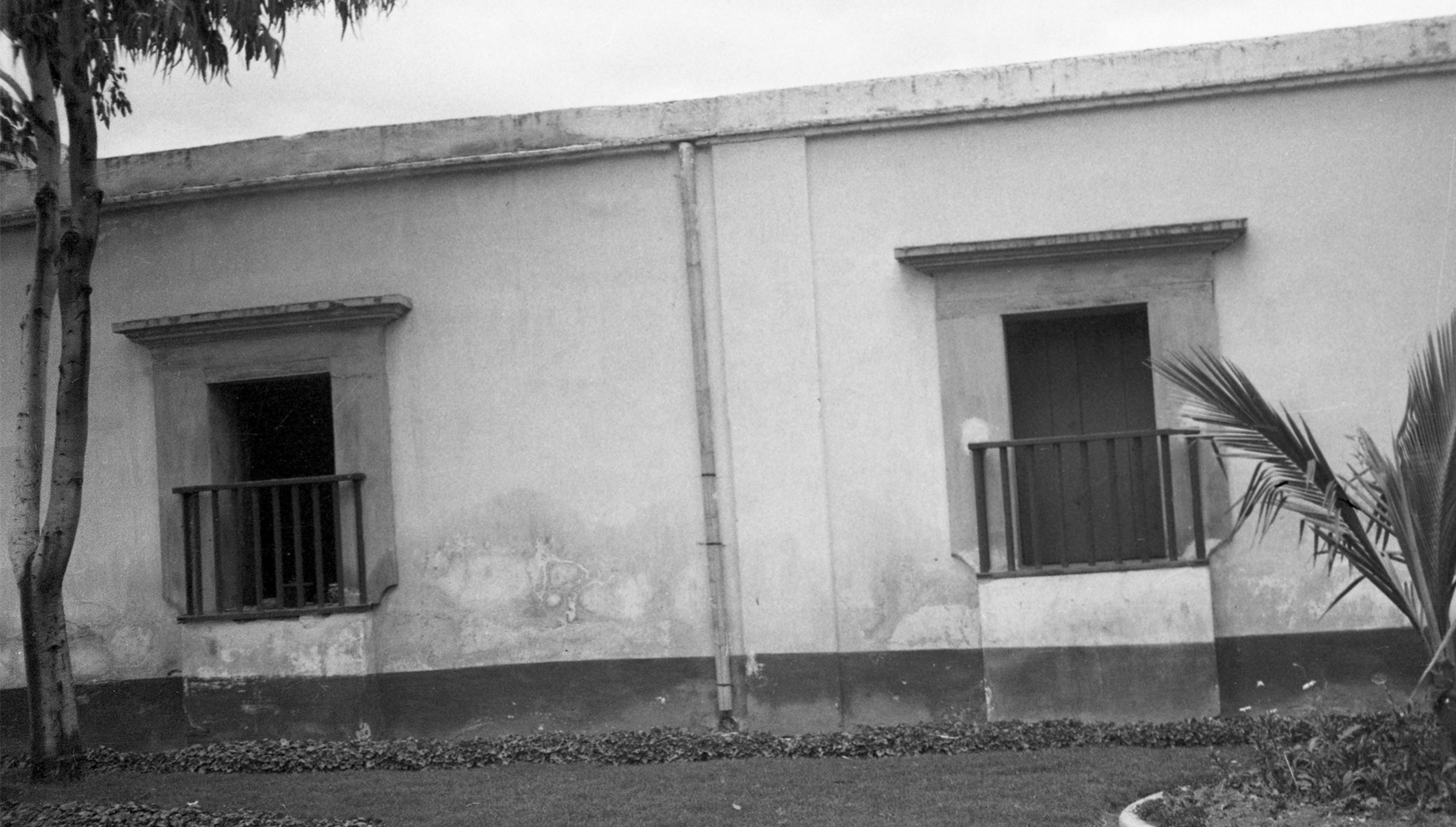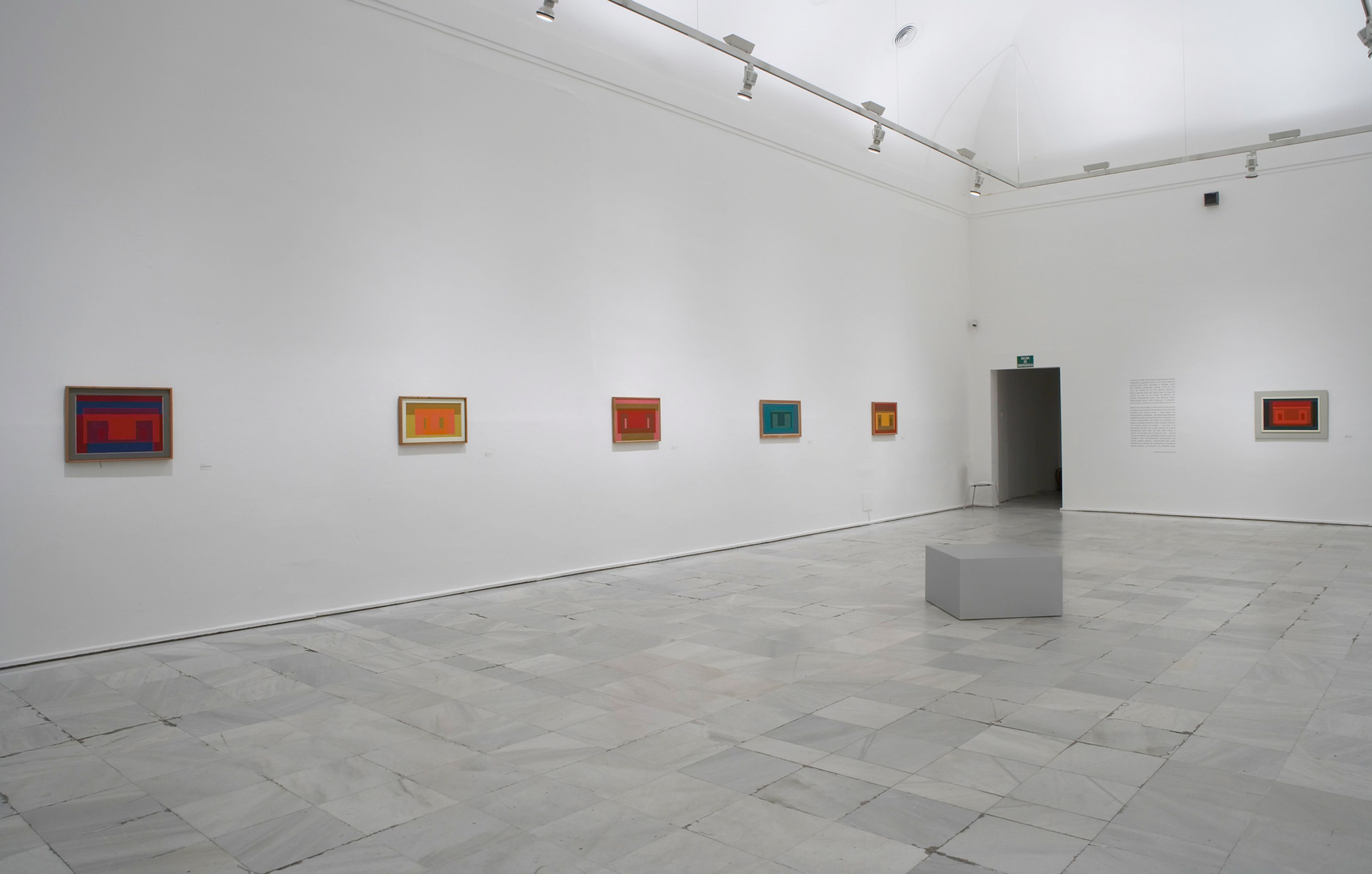Exceptional Works: Josef Albers
On the Other Side, 1952
Oil on Masonite in artist’s frame 25 7/8 x 34 3/4 x 1 3/8 inches 65.7 x 88.3 x 3.5 cm

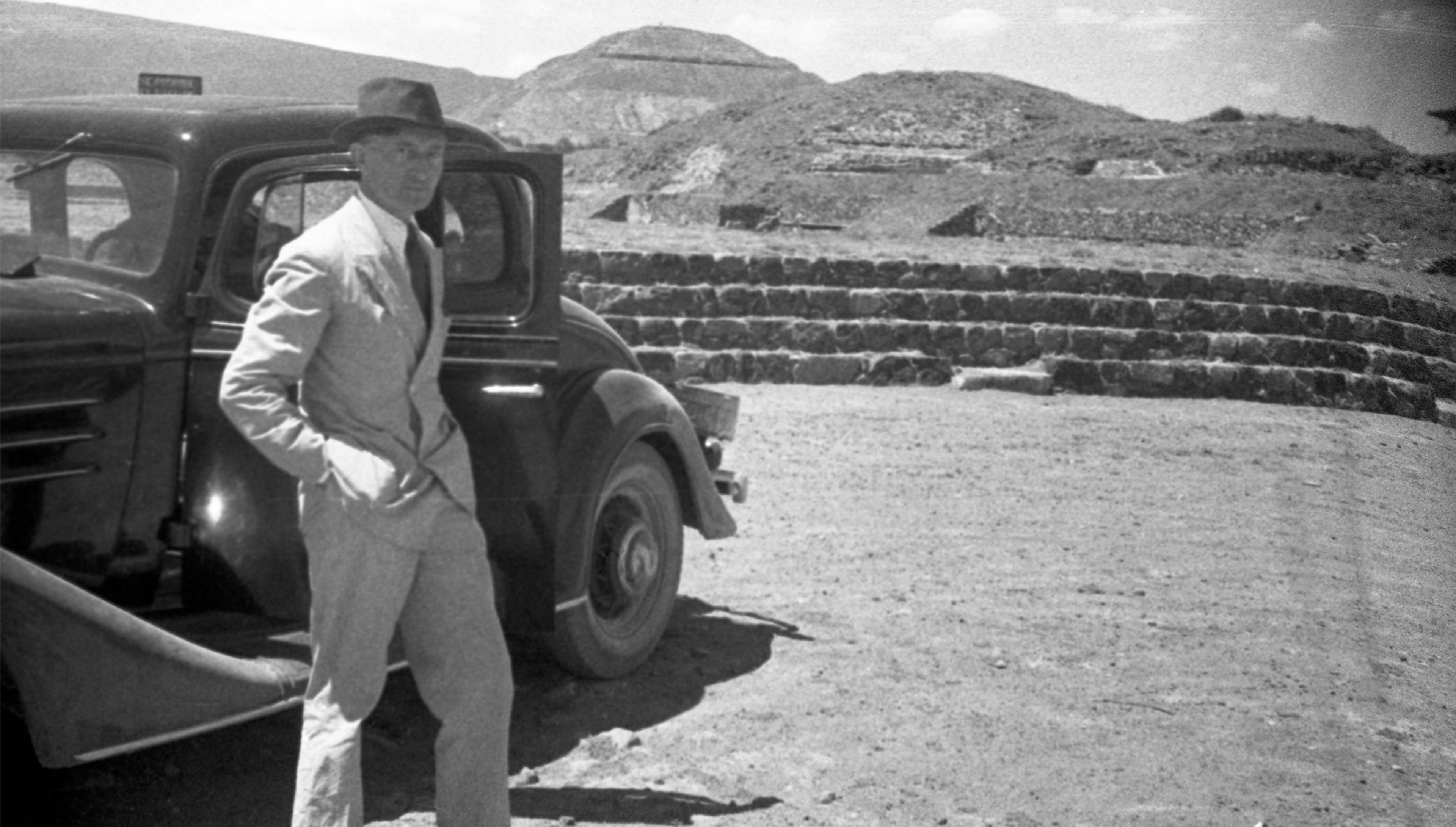
Josef Albers with the Alberses’ car, Teotihuacán, Mexico, 1936. Photographer unknown
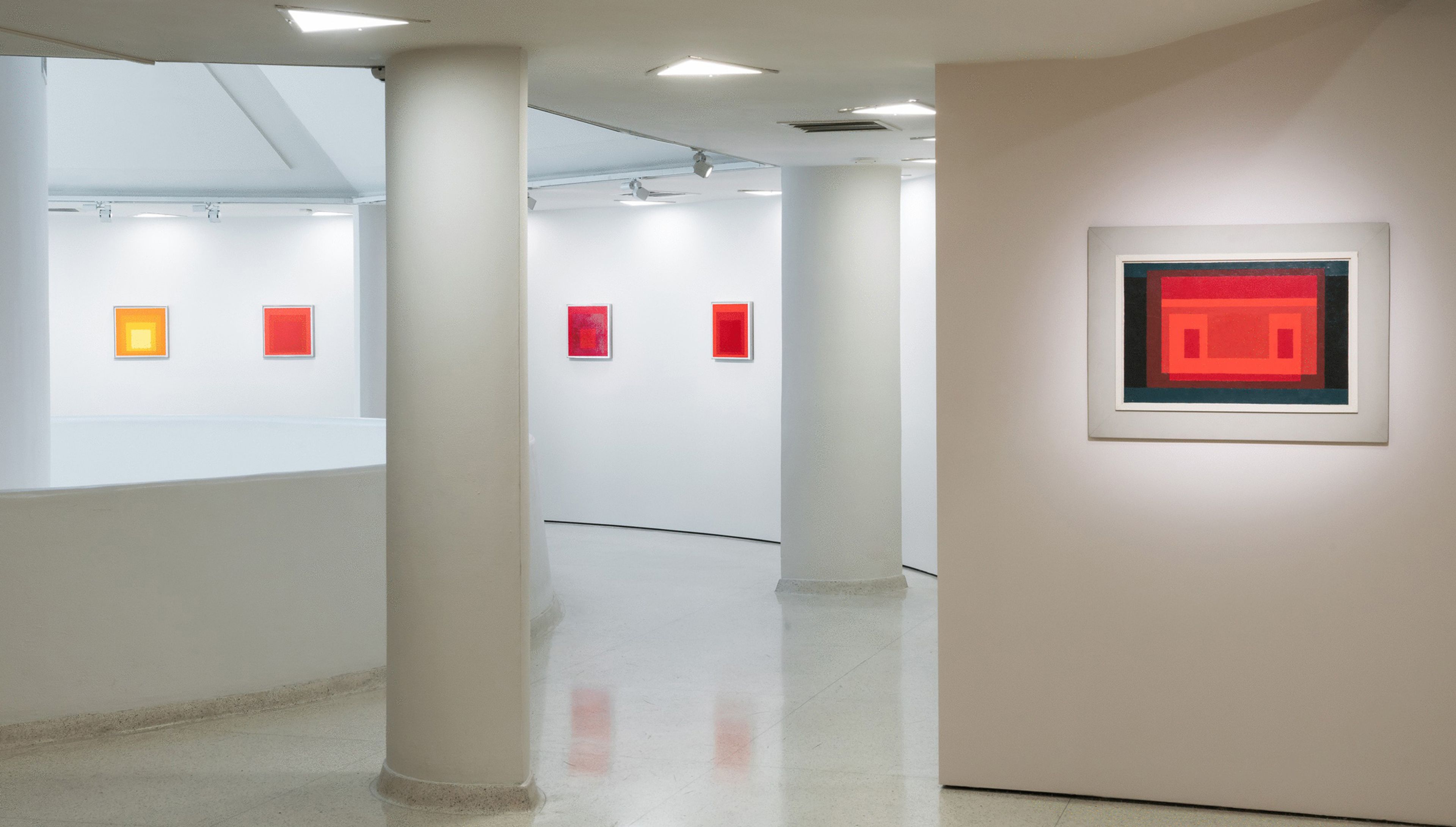
Installation view, Josef Albers in Mexico, Solomon R. Guggenheim Museum in New York, 2017. On the Other Side, 1952, is visible at right.
Josef Albers, On the Other Side, 1952 (detail)

Josef Albers in an exhibition at Yale University Art Gallery, 1956
As Brenda Danilowitz, chief curator of The Josef and Anni Albers Foundation, notes, “With this new series … Josef put aside the linear elements of his paintings and narrowed the medium down to the material of pure paint. He took up the challenge of discovering how paint behaves when subjected to similar restrictions to those that exist in weaving, where it is physically impossible to mix colors, and color change can only be achieved by the illusion created when two or more juxtaposed threads interact in the viewer’s eye.”
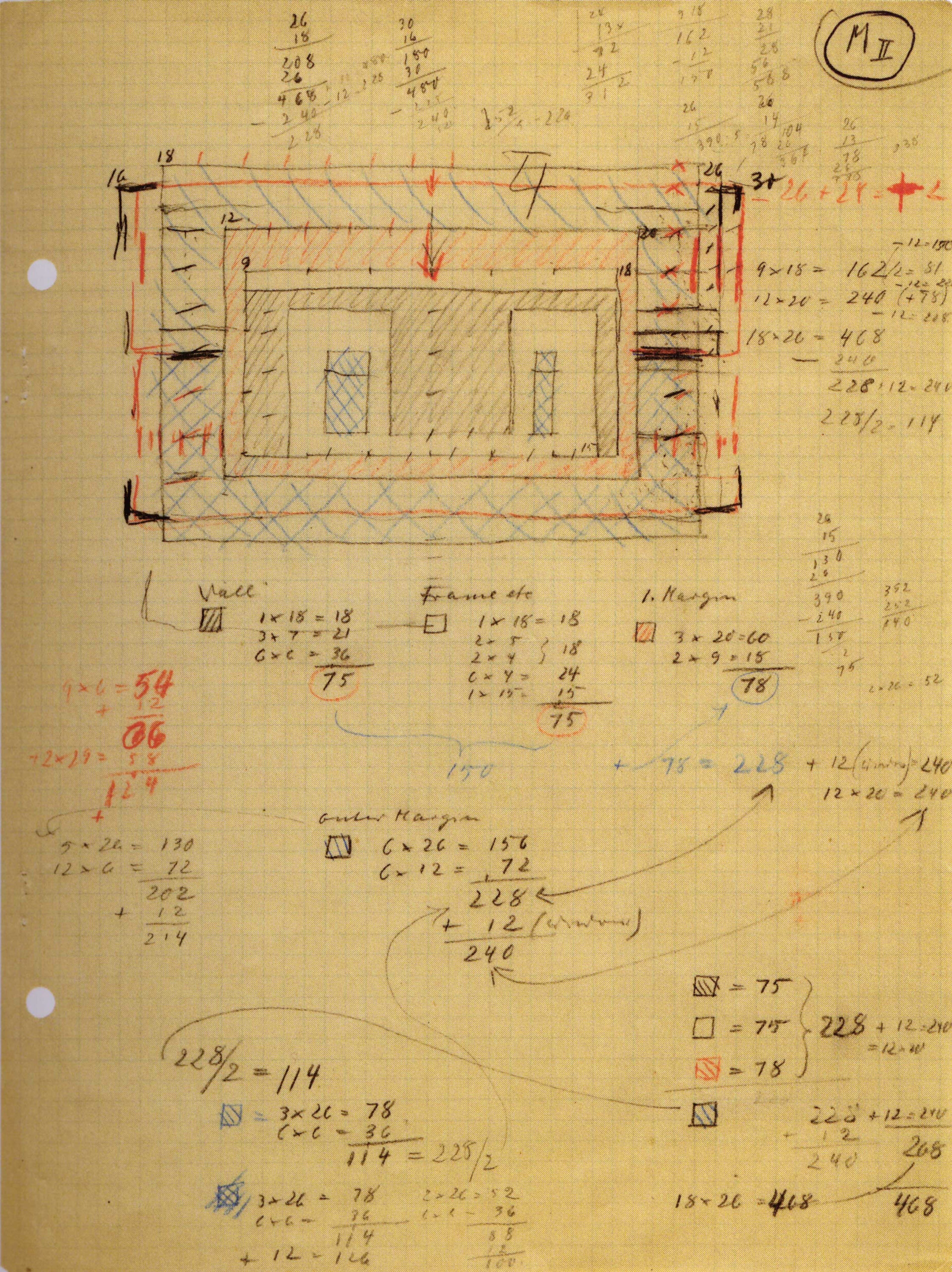
Josef Albers, Drawing of Adobe-Variant, M.II, c. 1947. The Josef and Anni Albers Foundation, Bethany, Connecticut
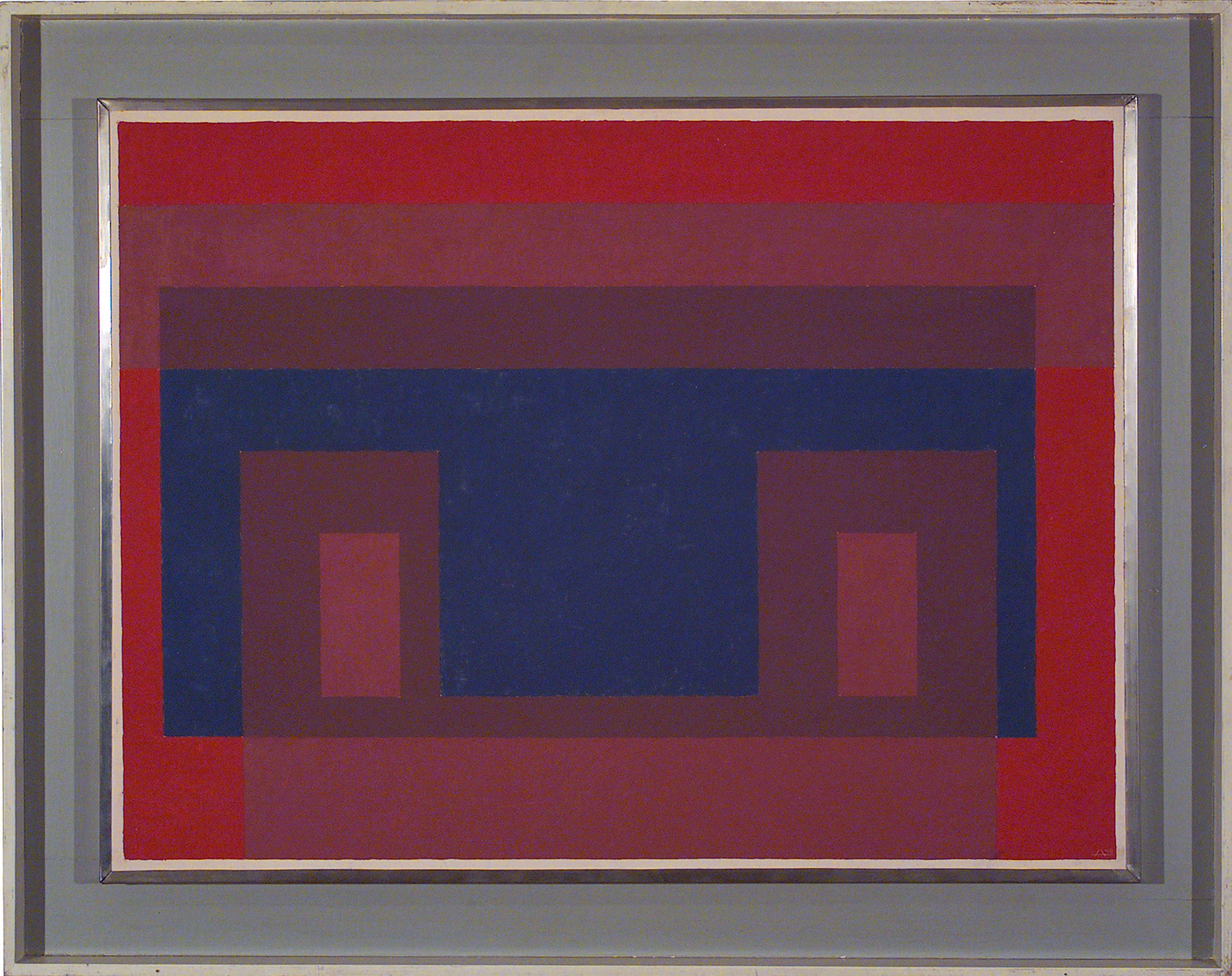
Josef Albers, Variant: Three Reds Around Blue, in artist’s frame, 1948. Museum of Fine Arts, Boston
“Within two years I made about 200 preparatory studies. In making them I put myself on a very strict painting diet, perhaps the strictest possible for me…. All ‘Variants’ are built on an underlying checkerboard-like structure. This provides a definite relationship of all parts, and therefore unification of form.”
—Josef Albers, 1948
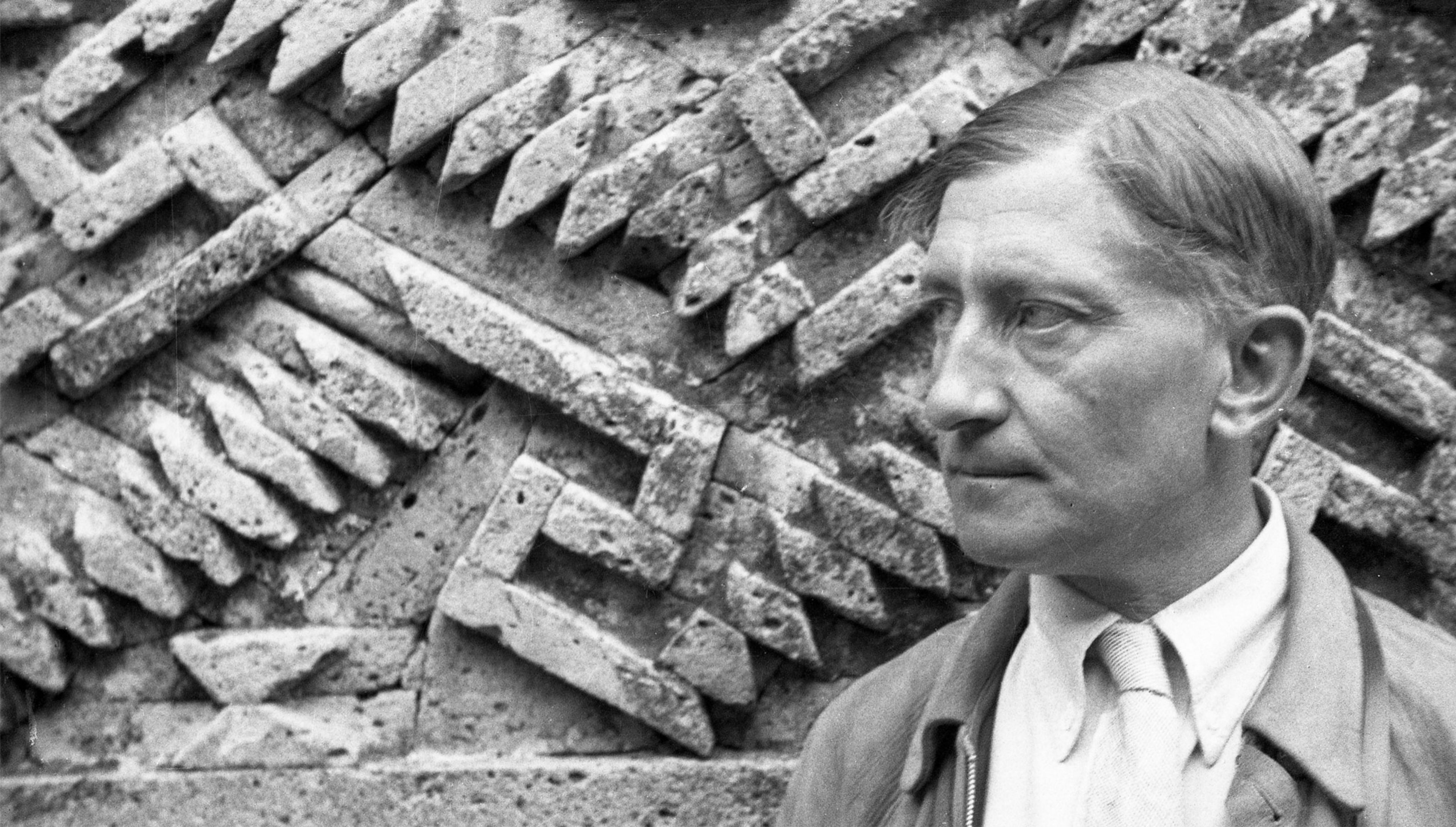
Josef Albers, Mitla, Mexico, photo negative, 1936-1937. © 2024 The Josef and Anni Albers Foundation/Artists Rights Society (ARS) New York/DACS, London

David Zwirner at Art Basel


